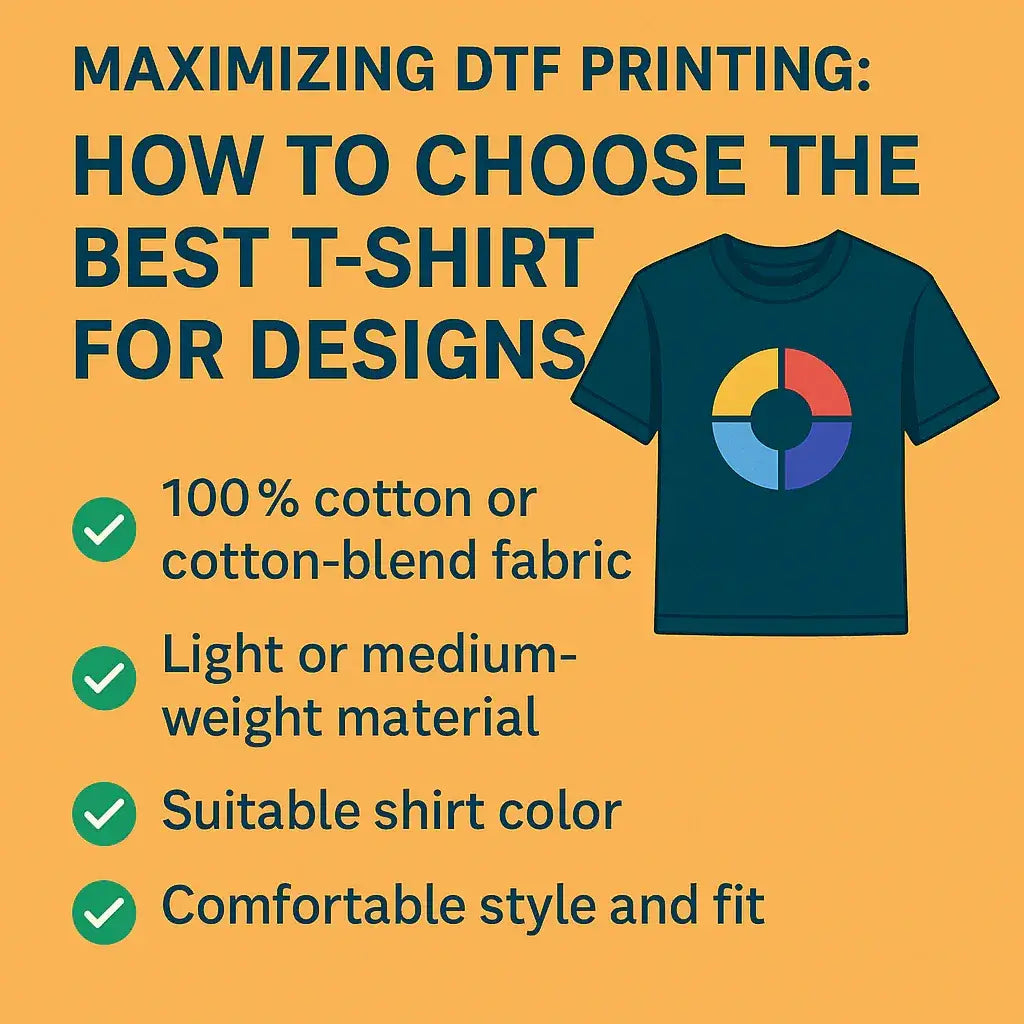DTF (Direct-to-Film) printing has become one of the most popular and efficient ways to customize T-shirts. In today’s world, fashion is more than just clothing—it's a form of self-expression. Whether it's showcasing beliefs, lifestyle, or personal branding, custom T-shirts are now a powerful communication tool.
But to ensure those designs truly shine, choosing the right T-shirt matters just as much as the print itself. Fabric type, fit, and fabric weight all affect how well the design prints, how it feels, and how long it lasts.
1. Fabric Type: Why Cotton Is King
The first factor to consider when selecting a T-shirt for DTF printing is the fabric composition.
- 100% Cotton T-Shirts: Cotton is the best choice for DTF printing. Its smooth surface allows ink to adhere evenly and vibrantly, resulting in sharper and brighter designs. Cotton also supports faster press times, increasing production efficiency.
- Cotton-Polyester Blends: These blends offer durability and can still deliver great print results. However, if the polyester ratio is too high, it may interfere with ink absorption, requiring special temperature or time adjustments.
Tip: For optimal results, choose combed and ring-spun cotton for an even smoother and more consistent print surface.
2. Fabric Weight & Texture: Printability Meets Comfort
Beyond the fabric type, the weight and texture of the shirt can dramatically influence the final result.
- Lightweight and Medium-Weight Shirts: These are ideal for DTF printing because they provide a smooth, flexible surface that helps ink adhere better and allows for greater comfort in wear.
- Heavyweight Shirts: While more durable, they tend to absorb ink less evenly and may feel stiff after printing, affecting both the print quality and the user experience.
Tip: Look for “soft-style” or “ringspun” labels, which often signal a finer, more printable fabric.
3. Shirt Color: Contrast is Key
Color plays a significant role in how vibrant and clear your DTF print appears.
- Light-Colored Shirts: Perfect for vibrant, true-to-design color reproduction with minimal ink layering.
- Dark-Colored Shirts: Require a white ink base layer to ensure that colors show up clearly. High-quality white ink is essential for these prints to maintain opacity and sharpness.
4. Style and Comfort: The Final Product Matters
Customers not only want shirts that look great—they want them to feel great too. Choosing a flattering and comfortable cut increases the likelihood that your custom shirt will be worn and loved.
- Classic unisex cuts work well for most prints.
- Fitted or premium tees are great for fashion-forward markets.
- Tagless and preshrunk options enhance user satisfaction.
Final Thoughts
DTF printing makes it easier than ever to create customized apparel—but your results are only as good as the shirt you start with.
- ✅ Use 100% cotton or cotton-blend shirts
- ✅ Choose light or medium-weight fabric for best adhesion
- ✅ Consider shirt color and its effect on ink visibility
- ✅ Prioritize both print quality and wearability
With the right shirt, your DTF designs will not only look amazing but last longer and feel better—giving your customers a reason to come back for more.
👉 Browse premium print-ready blanks and learn more at
🔗 DTFPrinterUSA.com
